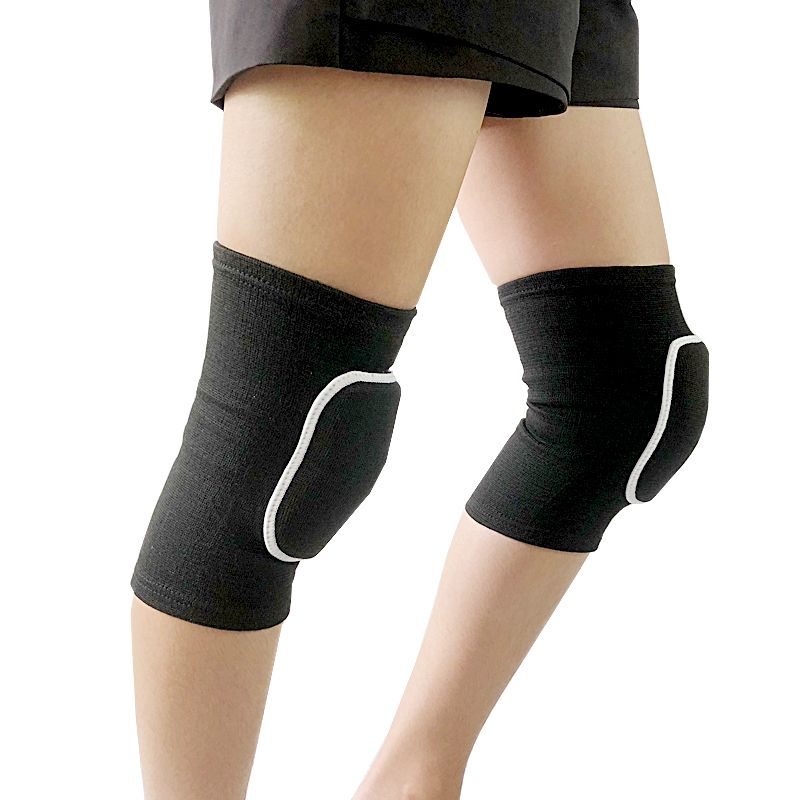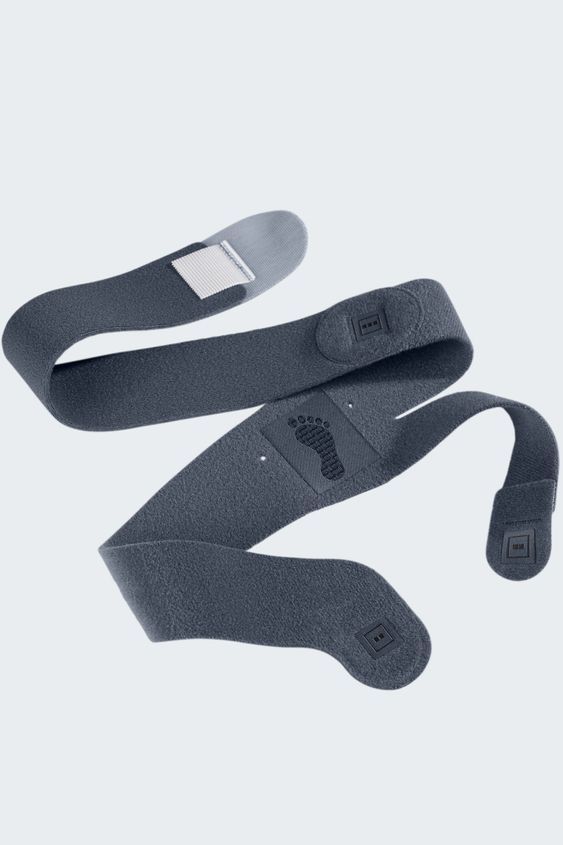john@lee-mat.com
+86-13510662576

GET QUOTE
How to Choose the Right Knee Support for Your Athletic Needs
Hey there, fellow athletes and sports enthusiasts! We understand that pursuing your athletic passions often means pushing your body to the limits. However, the constant wear and tear on your knees can be a challenge. Whether you're a seasoned athlete striving for peak performance or someone on the road to recovery from a knee injury, the right knee support is crucial.
In this guide, we're here to simplify the process of choosing the perfect knee support tailored to your athletic needs. Plus, we want to introduce you to Lee-Mat's innovative ankle support band, a product that provides comprehensive support not only for your knees but also for your ankles. Let's dive in!
Understanding Your Needs
We get it; everyone's needs are unique. It's vital to understand what you're looking for in knee support. Are you focused on injury prevention, seeking post-injury support, or aiming to boost your performance? Your goals and needs will determine the type of knee support that's right for you. Take a moment to evaluate your situation and set clear objectives.
Begin by assessing your current physical condition. Determine if you're recovering from a knee injury, looking to prevent injuries, or aiming to enhance your athletic performance. Consider the type of sport or activity you're involved in and any previous knee injuries. If you've had past knee issues, identify the specific areas of concern.
Once you've evaluated your situation, set clear objectives based on your goals. If injury prevention is your aim, define the activities or movements that stress your knees, and look for support that minimizes those risks. For those in post-injury recovery, align your objectives with your medical professional's recommendations. If performance enhancement is the goal, focus on stability, endurance, and movement. Lastly, always consider comfort and convenience to ensure your knee support enhances your athletic experience. By understanding your needs and objectives, you'll be well-prepared to select the perfect knee support tailored to your specific athletic requirements.
Explore Knee Support Options
Knee supports come in various forms, each designed to address specific issues. We'll break down knee sleeves, braces, stabilizers, and straps, explaining what each does and the benefits they offer.
Knee Sleeves:
Knee sleeves are a popular choice among athletes for providing compression and support to the knee joint. They are typically made of neoprene or similar materials and are designed to slide over the knee. Knee sleeves offer benefits such as improved blood flow, reduced pain and swelling, and enhanced proprioception, which is your awareness of the knee's position in space. They are an excellent choice for injury prevention and mild to moderate knee support. Athletes often use them in activities like weightlifting, powerlifting, and endurance sports.
Knee Braces:
Knee braces are more rigid and offer additional stability compared to knee sleeves. They are designed to limit the movement of the knee joint, providing support and protection. There are various types of knee braces, including hinged and non-hinged models. Hinged braces allow controlled movement while providing stability, making them suitable for post-injury recovery. Non-hinged braces offer more immobilization, making them ideal for severe injuries or after surgical procedures. The benefits of knee braces include strong support for injured or weakened knees and helping with recovery after injuries or surgeries.
Knee Stabilizers:
Knee stabilizers are similar to braces but are less rigid. They strike a balance between support and flexibility. Stabilizers are often used in activities that require a wide range of knee motion, such as running and other dynamic sports. They provide stability without compromising natural movement. Stabilizers are beneficial for athletes who need mild to moderate support while maintaining their agility and range of motion.
Knee Straps:
Knee straps, also known as patellar straps or bands, are designed to target specific issues, such as patellar tendonitis or runner's knee. They are placed just below the knee to provide pressure and support to the patellar tendon. The benefits of knee straps include reducing pain and inflammation in the targeted area, offering relief from common knee conditions, and enhancing overall knee function. They are often used in running, cycling, and activities that put strain on the patellar tendon.
Understanding these options will empower you to make an informed choice, ensuring that you get the right support for your unique needs.
Find the Perfect Fit
Once you've identified your specific knee support needs and chosen the type of support that suits you best, the next critical step is ensuring the perfect fit. The right fit is essential for both comfort and the effectiveness of your knee support. Here's how to go about it:
Measure Your Knee Correctly: Start by measuring your knee's circumference. Use a flexible tape measure or a piece of string that you can measure against a ruler. Measure just above your kneecap, as this is the area where most knee supports will sit. Ensure that the measuring tape is snug but not too tight.
Refer to Sizing Charts: Most knee support products come with sizing charts provided by the manufacturer. These charts typically correlate the measurements you've taken to the appropriate size of knee support. Follow these sizing charts carefully to find the size that matches your measurements.
Consider Compression Levels: Different knee supports offer various levels of compression. Some are designed to be tight-fitting, providing high compression, while others offer a more relaxed fit with mild compression. Your choice should align with your specific needs; for injury prevention, you might prefer a snug fit, while post-injury recovery might require a balance between comfort and support.
Check for Adjustability: Some knee supports come with adjustable straps or fastenings, allowing you to fine-tune the fit. These can be especially useful if you have a unique knee shape or if you need to adjust the fit during your activity.
Try It On: If possible, try on the knee support before purchasing it. Make sure it feels snug but not restrictive. You should be able to move your knee comfortably while wearing the support. It's an excellent way to ensure the fit is just right.
Follow Manufacturer Guidelines: Always follow the specific fitting guidelines provided by the manufacturer. Some knee supports may have unique instructions for putting them on and adjusting them correctly.
Consider Professional Advice: If you have a history of significant knee issues or are recovering from a severe injury, consider consulting a healthcare professional or orthopedic specialist. They can offer guidance on the best knee support and ensure it's properly fitted for your specific needs.
Consider Material and Comfort Matters
The material of your knee support is a critical factor when it comes to comfort. Many knee support products are crafted from neoprene, a synthetic rubber material known for its elasticity and insulating properties. Neoprene provides excellent compression, which can help reduce pain and swelling. Its snug fit also supports better blood flow, essential for recovery and peak performance.
Tailor Your Choice to Your Sport
Different sports put unique demands on your knees. In this section, we'll help you select the right knee support tailored to your athletic pursuits, whether you're into running, basketball, weightlifting, or any other sport. The right support can make a world of difference, enhancing your performance and reducing the risk of injuries.
Prioritizing Quality Support
We saved the best for last - quality. Quality is non-negotiable when it comes to knee support. The high-quality options provide not only knee support but also comprehensive ankle protection, ensuring you're in top form and reducing the risk of injuries.
Conclusion
Choosing the right knee support is a crucial decision that can significantly impact your athletic journey. By understanding your needs, exploring different support options, finding the perfect fit, considering material and comfort, tailoring your choice to your sport, and investing in high-quality gear like Lee-Mat's ankle support band, you can ensure your knees and ankles receive the protection they need. This way, you'll be able to give your best performance on the field and stay at the top of your game.
So, here's to staying injury-free and performing at your best. Happy training, everyone!


